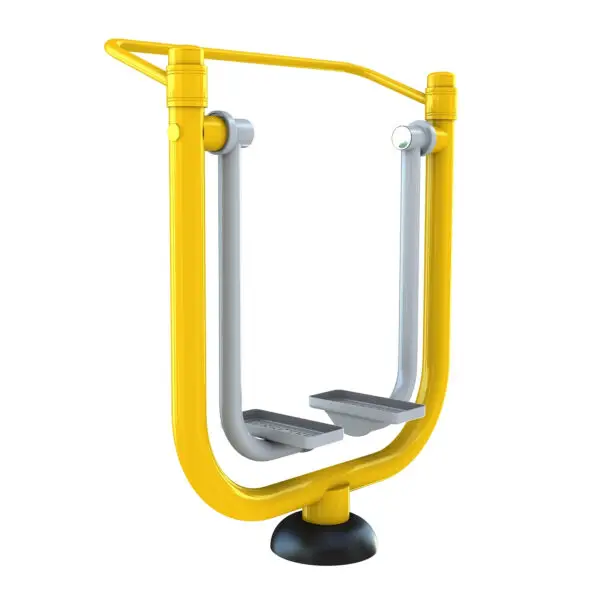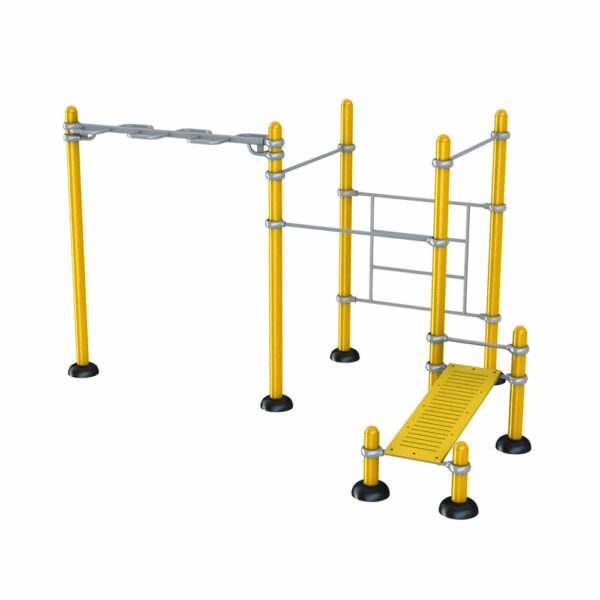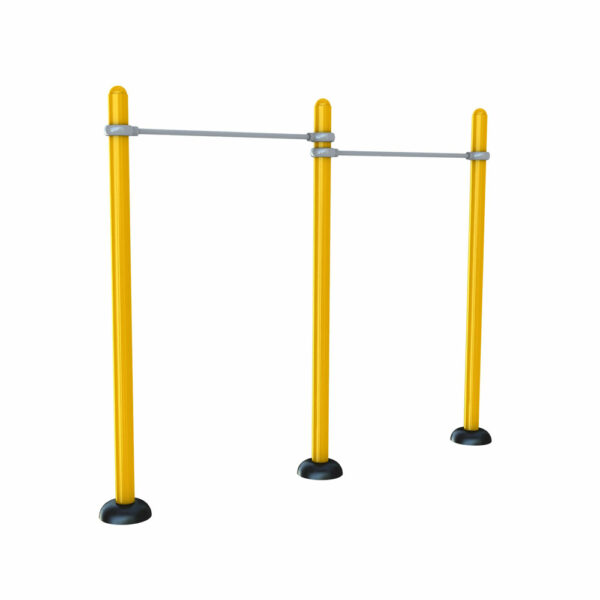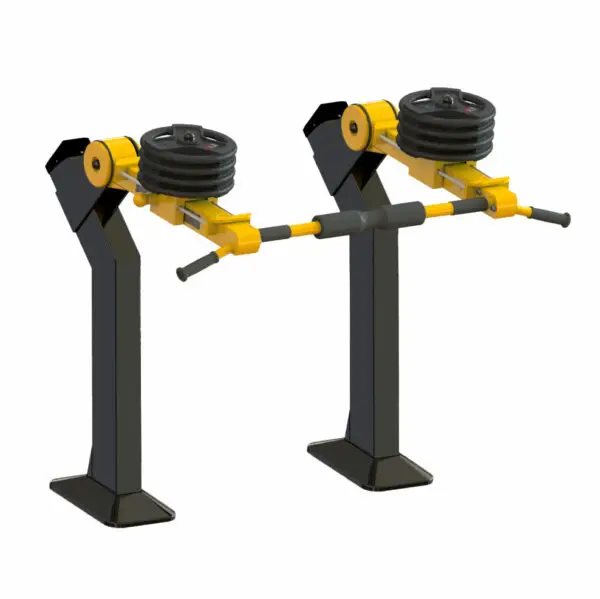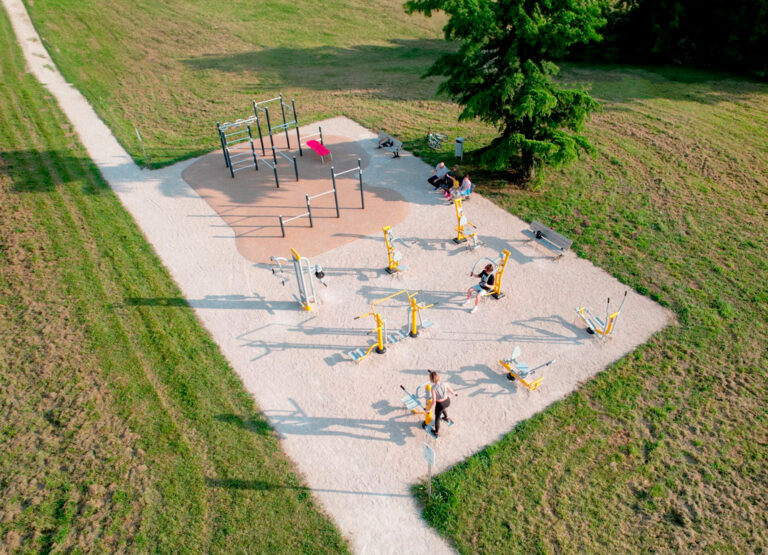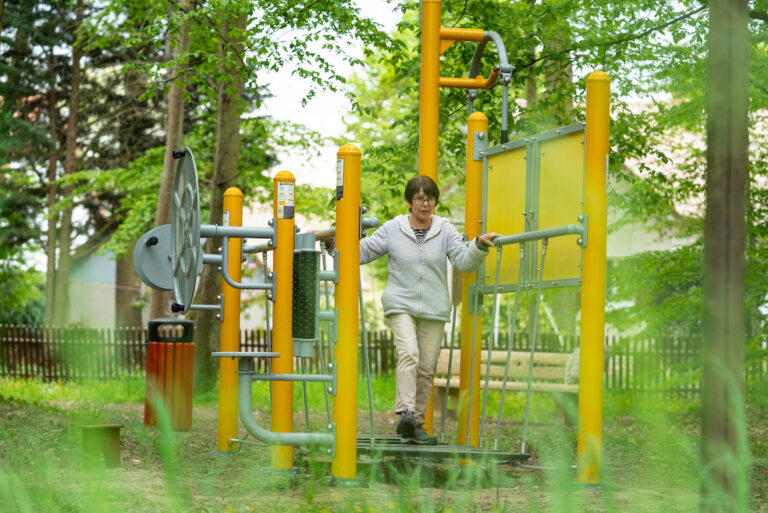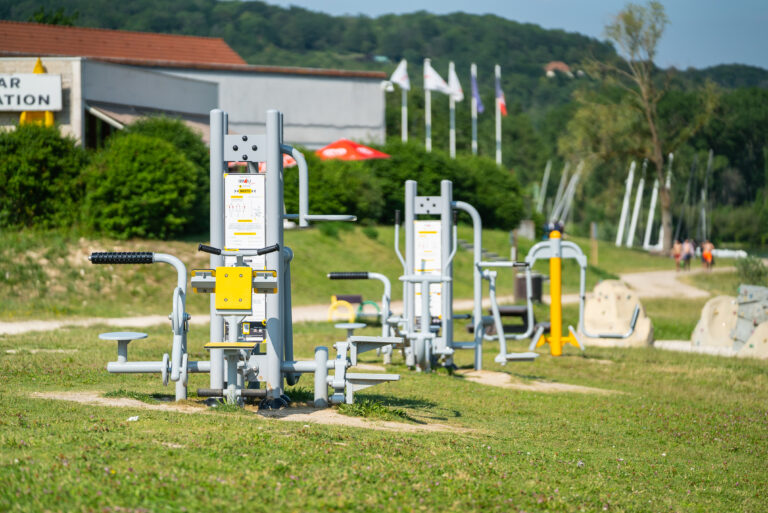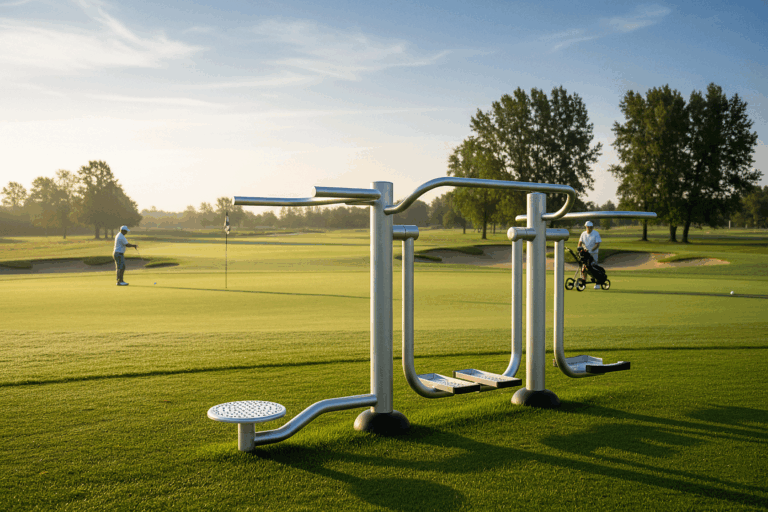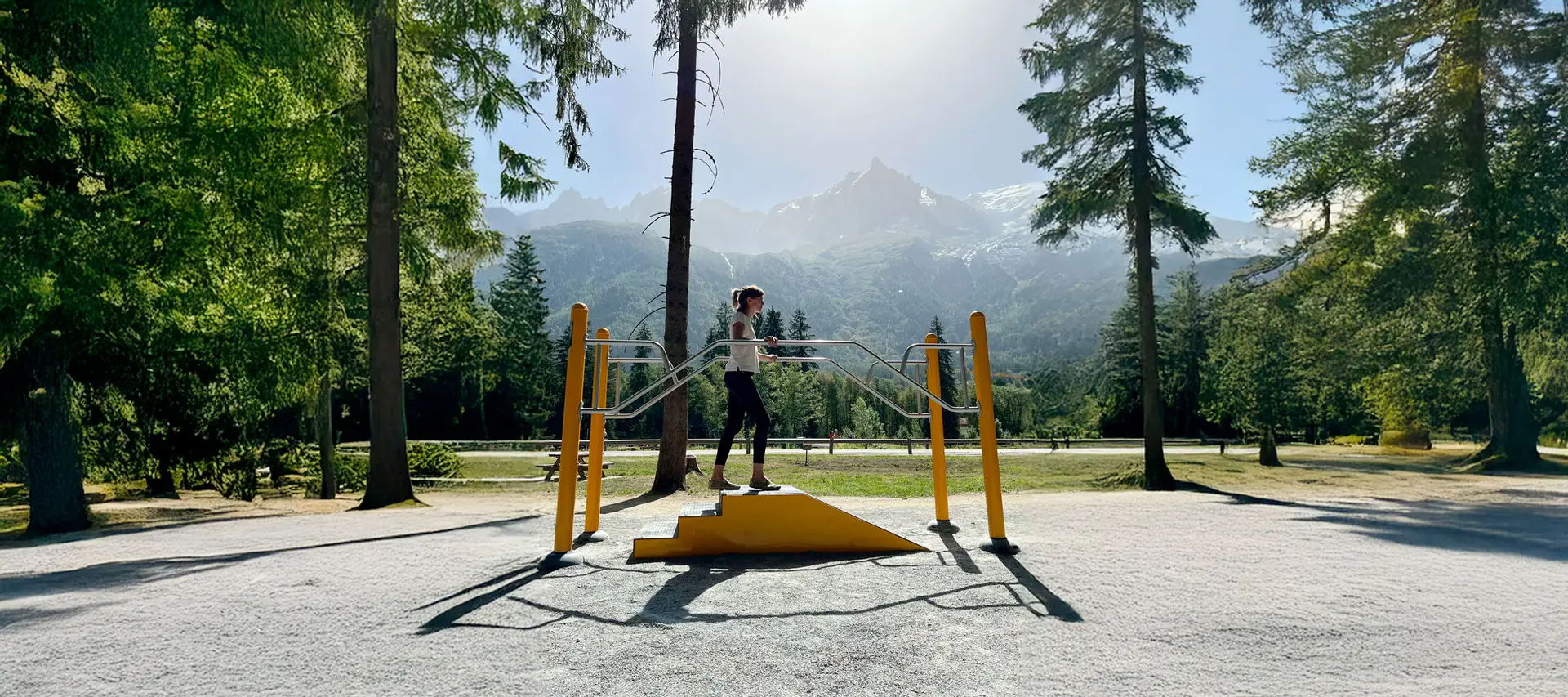
Outdoor fitness areas are becoming increasingly popular, enabling adults and teenagers alike to enjoy physical activity outdoors. But how do you guarantee the safety and conformity of the equipment? That’s where EN 16630 standard.
1. What is EN 16630 and why is it essential for outdoor fitness areas?
The EN 16630 standard is the European safety standard for outdoor fitness equipment. It defines the rules to be complied with by fitness equipment installed on a permanent, open-access basis, particularly in public areas such as parks, urban areas and fitness trails.
The main aim of this standard is to guarantee user safety by regulating the design, installation, maintenance and use of outdoor fitness equipment. It imposes strict criteria concerning :
- Materials: They must be durable, weather-resistant and free of toxic substances.
- Design: Equipment must be designed to avoid any risk of injury (crushing, pinching, jamming, falling).
- Safety zones: a minimum distance must be maintained around each module to avoid collisions between users.
- Floor coverings: If the equipment presents a fall risk of over 1 m, a shock-absorbing floor is mandatory.
- Upkeep and maintenance: Regular inspections are essential to ensure the durability and safety of our installations.
The EN 16630 standard is aimed primarily at local authorities, public space planners, sports park operators and equipment manufacturers. It is essential for preventing accidents and ensuring that installations comply with European safety standards.
By applying these requirements, a compliant outdoor fitness area guarantees safe and suitable use for everyone, from teenagers to adults, while preserving the durability of the infrastructure.
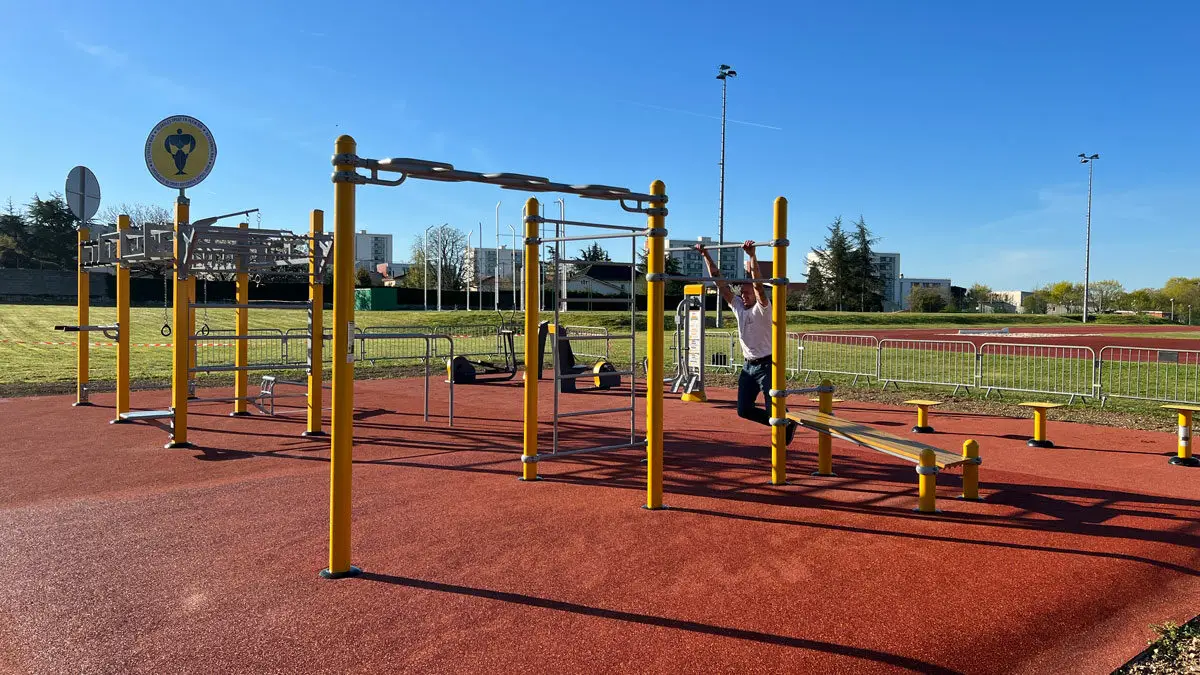
2. Regulations for outdoor fitness areas: What standard EN 16630 says
2.1 Who must comply with standard EN 16630 for an outdoor fitness area?
The EN 16630 standard concerns all those involved in the design and maintenance of outdoor fitness areas, guaranteeing safe, compliant equipment.
1. Local authorities and public space managers
Municipalities and public developers must comply with the standard to:
✔ Secure the use of equipment.
✔ Avoid legal liability in the event of an accident.
✔ Ensure compliance with European regulations.
2. Equipment manufacturers and suppliers
Manufacturers must offer compliant equipment, incorporating:
✔ Safe, durable materials.
✔ Anti-crush and anti-pinch tests.
✔ Clear marking attesting to compliance.
3. Installers and maintenance companies
Installers must guarantee:
✔ Secure, stable anchoring of equipment.
✔ Compliance with minimum safety distances (1.50 m).
✔ Regular maintenance to prevent wear and defects.
4. Private site operators (campsites, clubs, hotels)
An outdoor fitness area installed on a private site must also comply to:
✔ Provide safe use for customers.
✔ Avoid lawsuits in the event of accidents.
✔ Improve the durability of the facilities.
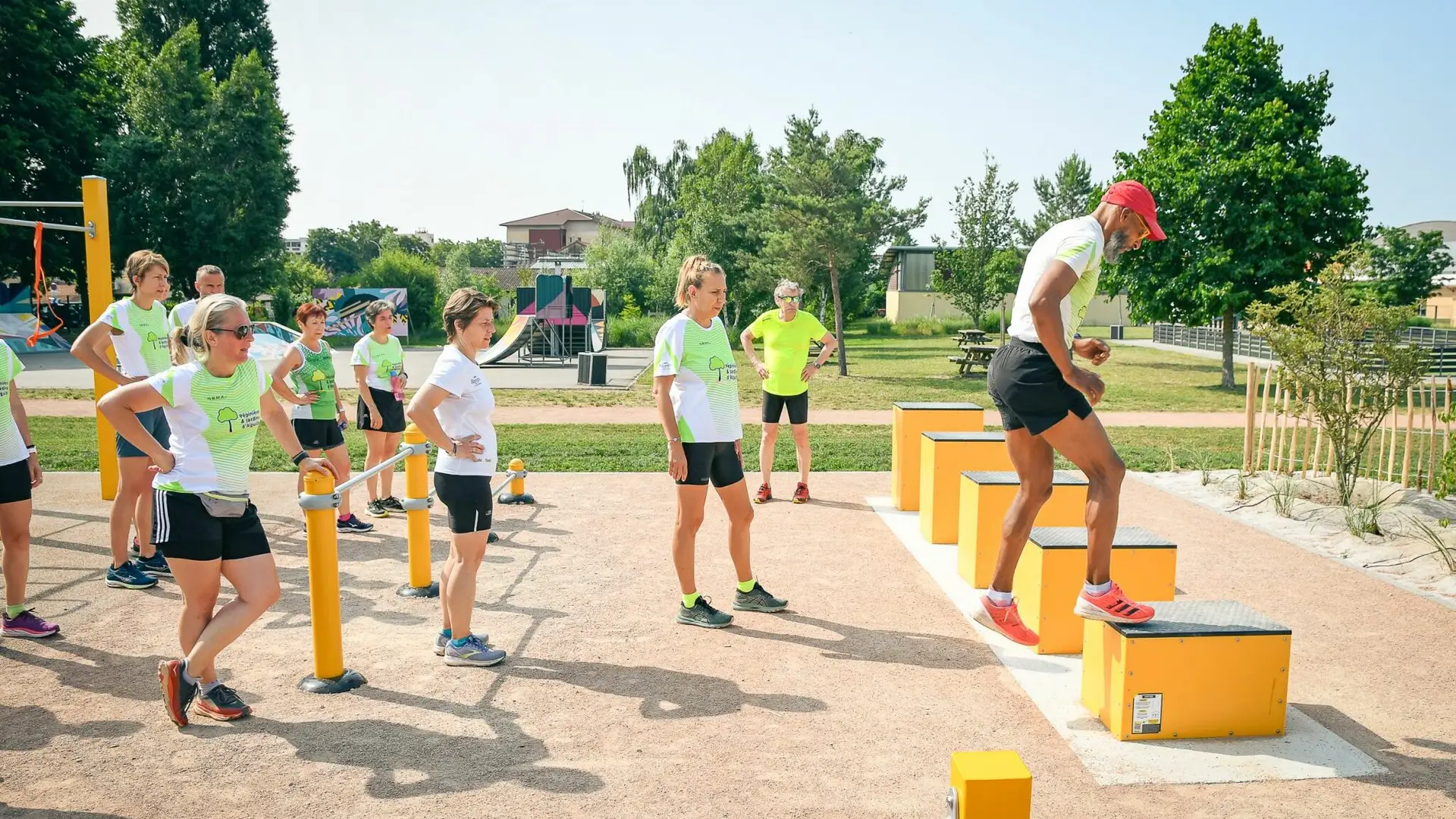
✅ Summary
Whether you’re a town council, manufacturer, installer or private manager, compliance with EN 16630 is essential to guarantee the safety, conformity and longevity of your equipment.
2.2 EN 16630 vs other standards (EN 1176, EN 957, EN 15312) : What are the differences?
Outdoor fitness areas must meet strict safety criteria. EN 16630 differs from other European standards which also govern certain sports and leisure equipment. Here are the main differences.
1. Standard EN 16630 vs. EN 1176 (Playground equipment for children)
- EN 16630 applies to outdoor fitness equipment for teenagers and adults.
- EN 1176 covers children’s play areas, including slides, swings and play structures.
- Key difference: An outdoor fitness area must not be installed in the immediate vicinity of a children’s play area, unless there is a clear physical separation.
2. Standard EN 16630 vs. EN 957 (Indoor fitness equipment)
- EN 16630 applies to fixed equipment installed outdoors.
- EN 957 applies to fitness and cardio equipment (treadmills, elliptical bikes, etc.).
- Unlike indoor fitness equipment, outdoor fitness equipment must withstand the elements and vandalism.
3. Standard EN 16630 vs. EN 15312 (open-access multisports facilities)
- EN 16630 regulates outdoor fitness equipment(pull-up ladders, steppers, bicycles).
- EN 15312 governs multi-sports structures accessible without reservation (basketball courts, soccer cages, skateparks).
- The main difference lies in the safety requirements, particularly with regard to fall zones and the materials used.
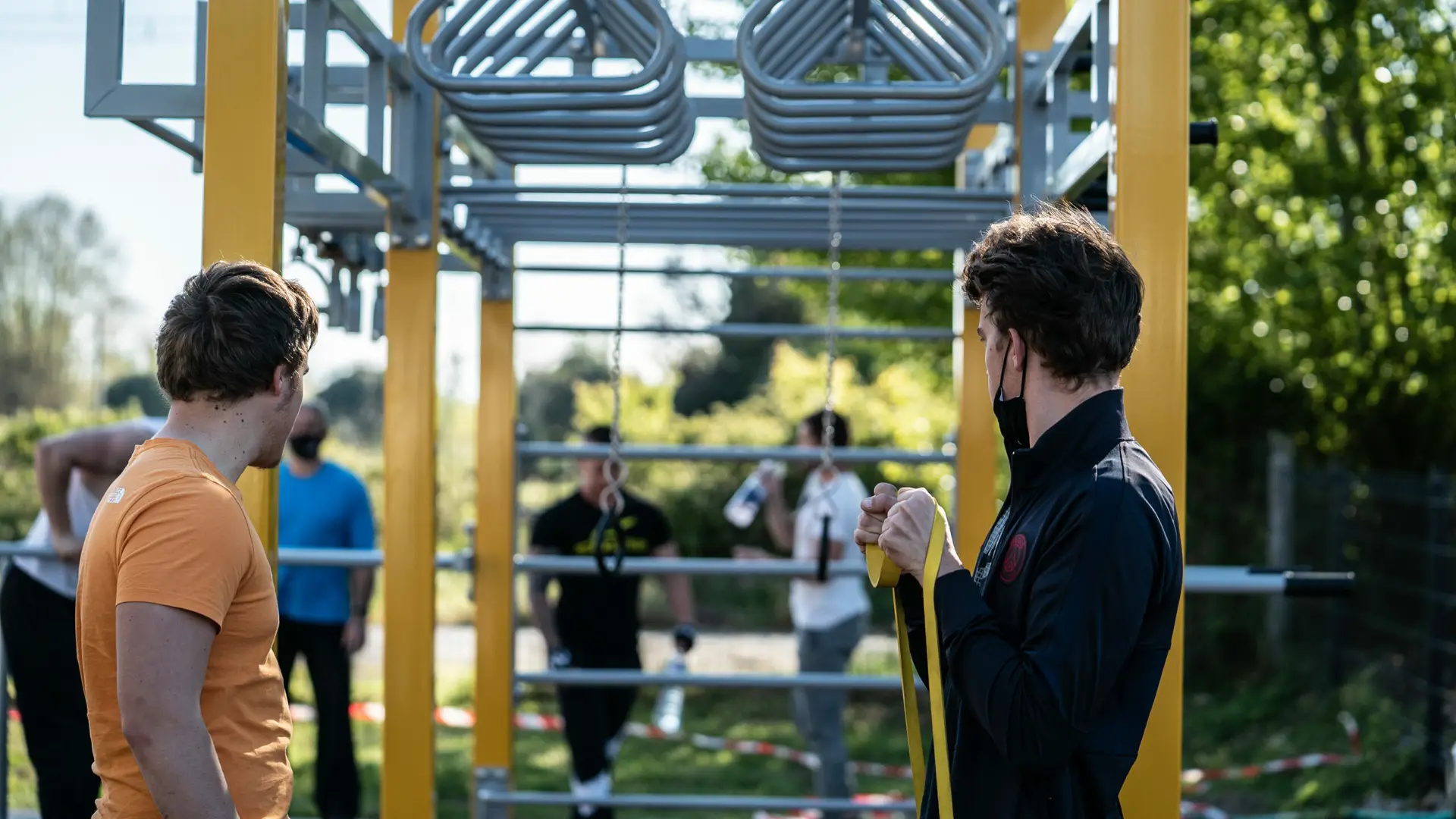
✅ Summary
The EN 16630 standard is specific to outdoor fitness areas, unlike other standards which apply to playgrounds, indoor sports equipment or multi-sports fields. Compliance with this standard guarantees equipment that is safe, resistant and suitable for outdoor use.
3. Safety of outdoor fitness equipment: what EN 16630 requires
3.1 What materials are permitted and prohibited for outdoor fitness areas ?rdits for outdoor fitness areas
The materials used in an outdoor fitness area must guarantee durability, safety and weather resistance. Standard EN 16630 imposes strict criteria to avoid corrosion, premature wear and risks to users’ health.
1. Authorized materials
Outdoor fitness equipment must be designed with resistant and safe materials, including:
✔ Corrosion-protected metals: stainless steel, galvanized steel or painted with an anti-corrosion coating.
✔ Treated wood for outdoor use: only species with high durability (class 1 and 2 according to EN 350-2) or protected against moisture.
✔ UV-resistant plastics and rubbers: to prevent degradation under the effect of sun and weather.
✔ Anti-slip coatings: mandatory on contact areas (steps, handles) to limit the risk of slipping.
2. Prohibited or restricted materials
❌ Toxic or hazardous substances: lead, mercury, formaldehyde, paints containing heavy metals.
❌ Untreated wood in contact with the ground: risk of premature rotting.
❌ Unprotected metals: risk of accelerated rusting and dangerous wear.
❌ Low-quality plastics or rubbers: can become brittle under the effect of cold or sunlight.
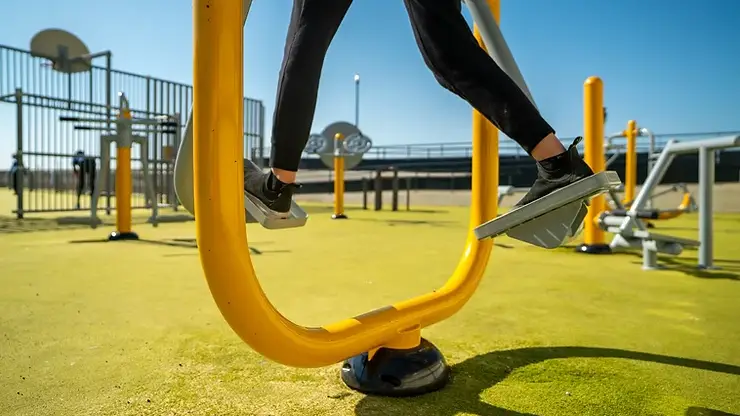
✅ S ummary
The materials used in an outdoor fitness area must be solid, safe and suitable for outdoor use. The EN 16630 standard guarantees the longevity of equipment and the safety of users.
3.2 How to avoid accidents through good equipment design?
Standard EN 16630 imposes strict rules on the design of outdoor fitness equipment to limit the risk of injuries, entrapments and falls. Each installation must be designed for safe, intuitive use.
1. Avoid pinching, crushing and entrapment hazards
✔ There must be no dangerous gaps that could allow the head, neck, fingers or feet to be trapped.
✔ Moving parts must be protected to prevent fingers or hands from being pinched.
✔ Adjustment and locking mechanisms must be secured to prevent unintentional adjustment during use.
2. Stability and weather resistance
✔ Equipment must return to its neutral position after use.
✔ No parts must loosen under the effect of vibration and climatic conditions.
✔ Surfaces must be smooth, without sharp edges or splinters.
3. Secure access and egress
✔ Equipment must allow easy ascent and descent to avoid imbalances.
✔ Grip and contact areas must be slip-resistant to prevent slipping, especially in wet weather.
✅ Summary
Good equipment design is essential to guarantee the safety of users of an outdoor fitness area. Standard EN 16630 imposes precise rules to prevent pinching, jamming and falls, while ensuring the durability and stability of structures.
3.3 What safety distance should be maintained around outdoor fitness equipment?
Standard EN 16630 defines mandatory safety zones around outdoor fitness equipment to limit the risk of collision between users, or between users and their environment, and thus prevent injury.
1. Minimum distance between equipment
✔ 1.50 m minimum between each piece of equipment to avoid unintentional contact.
✔ This distance may be increased if the equipment generates large movements (e.g. rocking, rotation).
✔ Movement zones must not overlap, except for static devices.
2. Free space for safe use
✔ Users must be able to move easily around the equipment.
✔ No obstructions must hinder access (benches, posts, fences).
✔ Equipment must not be installed near a children’s play area, except with a physical separation.
3. Height and clearance
✔ For overhead equipment, a vertical clearance zone is mandatory.
✔ No obstacles (branches, signs, lampposts) should impede users’ range of movement.

In a nutshell
Safety zones are essential to prevent accidents and ensure smooth, safe use of an outdoor fitness area. Standard EN 16630 stipulates a minimum distance of 1.50 m between equipment and an absence of obstacles to allow free exercise.
3.4 Locking and adjusting equipment : What are the standard requirements?
To guarantee the safety and durability of outdoor fitness equipment, standard EN 16630 imposes strict rules on locking and adjustment mechanisms. These elements must be reliable and secure, to prevent unintentional adjustment or misuse.
1. Secure locking systems
✔ Adjustment mechanisms must be protected to prevent unintentional or accidental manipulation.
✔ Adjustable parts must lock firmly after modification to prevent unintended movement.
✔ No moving parts must loosen due to vibration or wear.
2. Stability and positional stability
✔ Equipment with moving parts must return to their neutral position after use to avoid discomfort to other users.
✔ Damping and restraint systems must limit sudden impacts and prevent injury.
3. Accessibility and ease of use
✔ Adjustments should be simple and intuitive, without the need for special tools.
✔ Handles and adjustment points should be ergonomic, with easy, hand-safe grips.
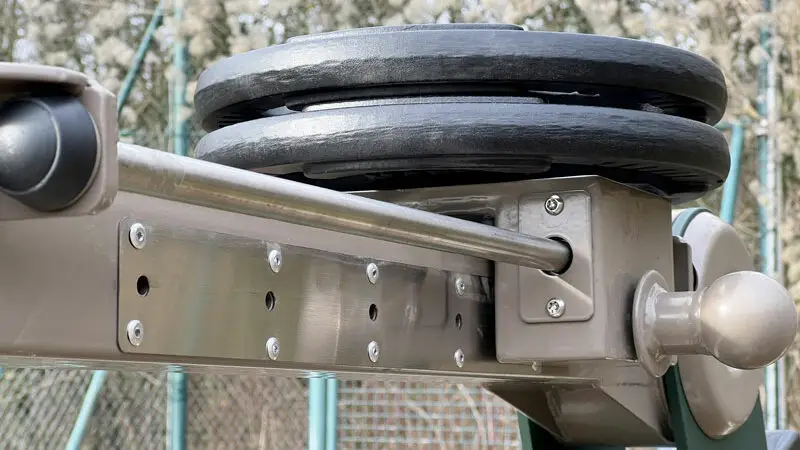
✅ S ummary
Locking and adjustment systems for outdoor fitness equipment must be robust, secure and intuitive. The EN 16630 standard thus guarantees safe, reliable use, limiting accidents linked to insecure adjustments or poorly-maintained moving parts.
3.5 Handles, chains and accessories: how to ensure user safety?
Handles, chains and other accessories on outdoor fitness equipment play a key role in the safety and ergonomics of the installations. Standard EN 16630 imposes strict rules to prevent injuries and guarantee optimum comfort of use.
1. Safe handles and gripping surfaces
✔ Handles must offer good grip to prevent slipping, even in wet conditions.
✔ No asperities or sharp edges should be present to avoid cuts or abrasions.
✔ Handle diameter should be appropriate (usually between 25 and 50 mm) for optimum grip.
2. Strong, safe chains and cables
✔ Chains and cables must be protected against corrosion, especially if exposed to the elements.
✔ No risk of strangulation or finger entrapment must be present.
✔ Cables under tension must be sheathed to prevent premature wear and minimize the risk of breakage.
3. Finishes and coatings
✔ Materials must be UV and weather resistant, especially for rubber or plastic handles.
✔ Fasteners must be protected to avoid the risk of loosening over time.
✔ Tube ends must be closed to prevent the accumulation of water and dirt.
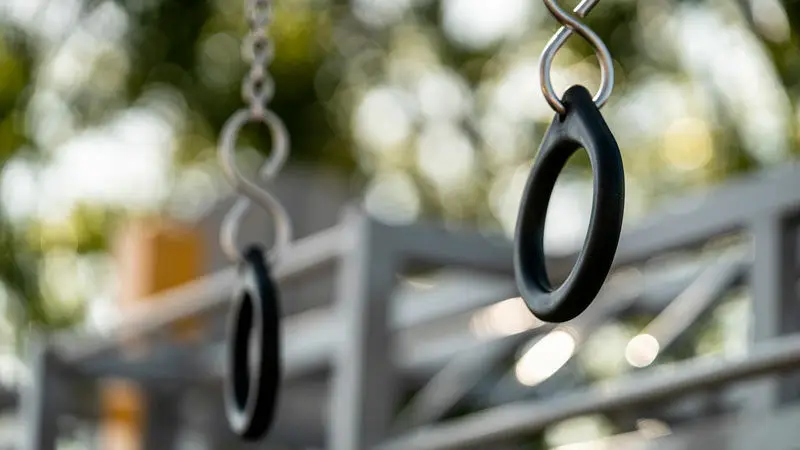
✅ S ummary
Handles, chains and accessories for outdoor fitness equipment must be strong, safe and comfortable to use. The EN 16630 standard imposes specific requirements to prevent injury and ensure optimum longevity of the equipment.
4. Falling heights and compliant floors to secure an outdoor fitness area
4.1 What is the maximum drop height permitted by standard EN 16630?
In an outdoor fitness area, falls are one of the main accident hazards. Standard EN 16630 lays down maximum fall heights depending on the type of equipment, in order to limit injuries.
1. Fall heights according to equipment use
✔ S tanding equipment (e.g. stepper, pull-up bar) → Max drop height: 2 m
✔ Seated equipment (e.g. stationary bikes, abdominal benches) → Max drop height: 1 m
✔ Hanging equipment (e.g. climbing bars) → Max drop height: 3 m
💡 If the fall height exceeds 1 m, a shock-absorbing floor is mandatory to absorb the impact and reduce the risk of injury.
2. Impact of fall heights on safety
✔ The higher the fall height, the greater the risk of injury → it’s crucial to install a suitable shock-absorbing floor.
✔ Equipment must be designed to limit falls (ergonomic grips, non-slip surfaces).
✔ Dangerous obstacles must be avoided in landing areas (no hard or sharp structures).
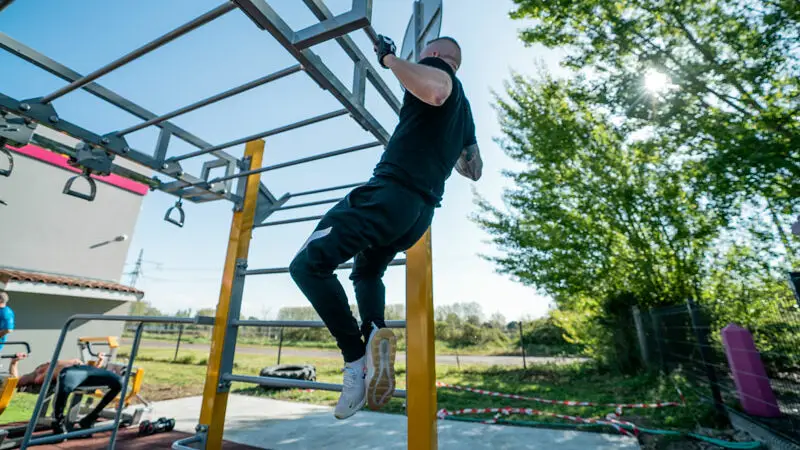
✅ S ummary
Standard EN 16630 defines maximum fall heights for each type of outdoor fitness area equipment. As soon as a fall height exceeds 1 m, a shock-absorbing surface is required to protect users in the event of an accidental fall.
4.2 How to choose the right flooring for an outdoor fitness area?
The choice of flooring in an outdoor fitness area is essential to ensure user safety. Standard EN 16630 requires the use of a shock-absorbing floor when the fall height exceeds 1 m, to reduce the risk of injury in the event of a fall.
1. Permitted floor coverings and maximum drop height
| Soil type | Minimum thickness | Maximum authorized drop height |
|---|---|---|
| Concrete, stone, asphalt | Not applicable | ≤ 1 m (no damping) |
| Natural grass, clay | Not applicable | ≤ 1,50 m |
| Wood chips (5-30 mm) | 20 cm | ≤ 2 m |
| Wood chips (5-30 mm) | 30 cm | ≤ 3 m |
| Sand (0.2-2 mm grain size) | 20 cm | ≤ 2 m |
| Sand (0.2-2 mm grain size) | 30 cm | ≤ 3 m |
| Gravel (2-8 mm grain size) | 20 cm | ≤ 2 m |
| Gravel (2-8 mm grain size) | 30 cm | ≤ 3 m |
| Rubber tiles | HIC test to EN 1177 | Varies by test |
💡 HIC (Head Injury Criterion): Standard EN 1177 requires an impact absorption test to determine the effectiveness of rubber tiles and other synthetic materials.
2. How to choose the right floor for an outdoor fitness area?
✔ If the fall height is less than 1 m → Concrete, asphalt or natural grass may suffice.
✔ If the fall height is between 1 and 2 m → A floor made of wood shavings, sand or gravel at least 20 cm thick is required.
✔ If the fall height exceeds 2 m → Opt for a cushioning floor at least 30 cm thick (sand, wood shavings, gravel) or rubber tiles tested to EN 1177.
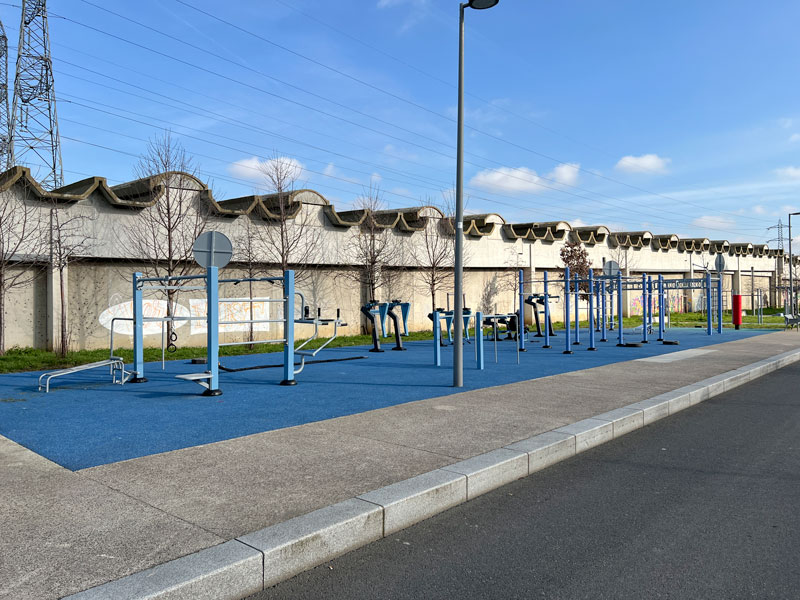
✅ S ummary
The flooring of an outdoor fitness area must be adapted to the fall height of the equipment. Standard EN 16630 requires shock-absorbing floors from a height of 1 m to protect users in the event of an accidental fall.
4.3 Why is floor maintenance essential for equipment safety?
Flooring plays a crucial role in the safety of an outdoor fitness area. Even if the installed floor complies with EN 16630, its effectiveness may diminish over time due to wear, weather conditions and lack of maintenance.
1. Risks associated with poorly maintained floors
🔴 Decreased shock absorption → Compacted ground (e.g. packed sand, decomposed wood shavings) loses its shock-absorbing effectiveness.
🔴 Presence of dangerous obstacles → Holes, cracks or objects can lead to falls or sprains.
🔴 Water accumulation and mud formation → Increased risk of slipping on certain surfaces (e.g. gravel, synthetic turf).
🔴 Degradation of rubber tiles → Cracks, settling and delamination reduce impact protection.
2. Recommended frequency of soil maintenance
✔ Weekly check → Visual inspection for anomalies (debris, holes, slippery areas).
✔ Monthly leveling and replenishment → Replace wood chips, sand or gravel if required.
✔ Annual thorough inspection → Material check and impact resistance tests in accordance with EN 1177 (HIC).
3. How can we extend the life of the soil?
✅ Use quality materials suited to the environment (UV-resistant, water-permeable).
✅ Provide effective drainage under shock-absorbing surfaces to prevent water stagnation.
✅ Replace damaged sections of rubber tiles or recharge floors with natural aggregates.
✅ S ummary
A poorly maintained floor in an outdoor fitness area can lose its shock-absorbing properties and increase the risk of injury. Regular maintenance ensures safety and compliance with EN 16630 and EN 1177 standards.
5. Installation, inspection and maintenance of outdoor fitness equipment
5.1 What are the installation and marking requirements for outdoor fitness equipment?
The installation of equipment in an outdoor fitness area must comply with precise rules to guarantee user safety and ensure compliance with standard EN 16630. In addition, compulsory marking must be present on each piece of equipment to inform users and facilitate maintenance.
1. Installation rules for outdoor fitness equipment
✔ S table, durable fixing → Equipment must be firmly anchored to the ground to prevent movement or tipping.
✔ Respect for safety zones → A minimum distance of 1.50 m must be left between each piece of equipment to avoid collisions.
✔ Absence of obstacles → No structures should impede access to or use of the equipment (poles, benches, trees).
✔ Orientation and accessibility → Equipment must be installed in such a way as to make it easy for users to enter and exit without risk of falling.
2. Mandatory marking on equipment
Every piece of outdoor fitness equipment complying with EN 16630 must bear information that is visible and legible to the user and operator:
✅ Manufacturer’s name and address
✅ Year of manufacture and serial number
✅ Pictograms and instructions for use (recommended exercises, correct posture)
✅ Restrictions on use (minimum size, warnings)
✅ Emergency or maintenance contact number
3. Manufacturer’s documentation
In addition to the marking on the equipment, each manufacturer must provide:
📌 An installation guide with safety distances and anchoring methods.
📌 A maintenance manual detailing inspection frequency and possible repairs.
📌 Manufacturing standards met, including compliance with EN 16630.
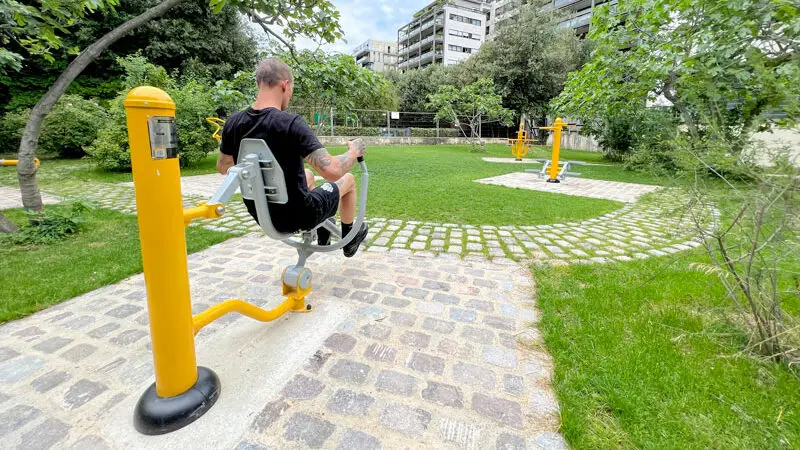
✅ S ummary
Safe installation and compulsory marking are essential to guarantee that outdoor fitness equipment complies with EN 16630, ensuring safe use and efficient maintenance.
5.2 How often should an outdoor fitness area be inspected to ensure safety?
To guarantee the safety and durability of an outdoor fitness area, EN 16630 requires regular inspections to detect and correct any defects before they become dangerous.
1. Three mandatory inspection levels
| Type of inspection | Recommended frequency | Main objective |
|---|---|---|
| Visual inspection | Daily or weekly | Check for apparent anomalies (loose parts, wear, vandalism). |
| Operational inspection | Every 1 to 3 months | Test equipment for proper operation and detect wear on moving parts. |
| Comprehensive annual inspection | 1 time per year | In-depth analysis of general structural condition, strength and stability tests. |
2. Key control points
✔ General condition of equipment: Look for cracks, corrosion or missing parts.
✔ Fasteners and anchors: Check stability and tighten bolts if necessary.
✔ Contact surfaces and handles: Detect wear on non-slip coatings.
✔ Moving mechanisms and joints: Check locking systems and moving parts.
✔ Flooring: Check cushioning and level if necessary.
3. Who is responsible for inspections?
🔹 O perators and managers of public spaces must organize and record inspections.
🔹 Manufacturers and installers must provide a maintenance guide with precise recommendations.
🔹 An independent inspection body may be asked to validate annual compliance.
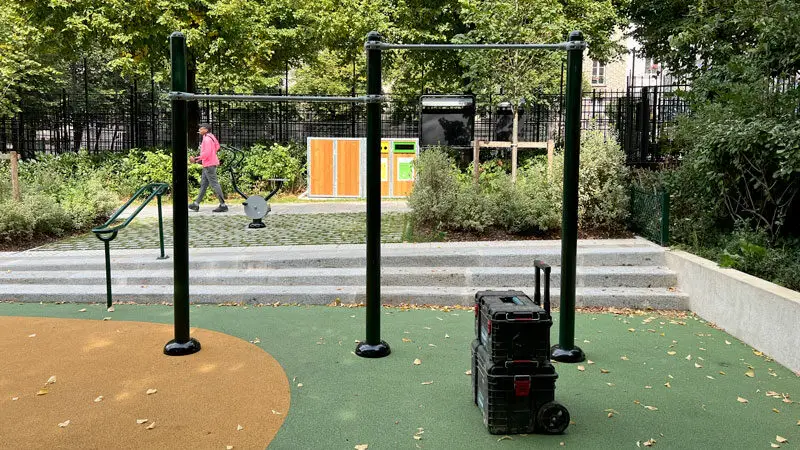
✅ S ummary
Standard EN 16630 requires regular inspections to guarantee the safety of outdoor fitness equipment. Frequent visual checks, operational tests every 3 months and a thorough annual inspection help to avoid the risks associated with wear and vandalism.
5.3 Maintenance and parts replacement: How to ensure equipment conformity?
Regular maintenance is essential to ensure the safety and longevity of outdoor fitness equipment. Standard EN 16630 lays down precise rules for maintenance and replacement of worn parts, to avoid any risk of accident.
1. Recommended maintenance frequency and types
| Maintenance type | Recommended frequency | Action to be taken |
|---|---|---|
| Preventive maintenance | Every 3 to 6 months | Check parts for wear and apply anti-corrosion treatments if necessary. |
| Corrective maintenance | As soon as a fault is detected | Repair or replace damaged components before they become dangerous. |
| Replacing wearing parts | According to manufacturer’s recommendations | Replace parts subject to high stress (handles, joints, bolts). |
2. Parts to be monitored and replaced as a priority
✔ Fasteners and bolts → Check their tightness to avoid any play or instability.
✔ Handles and coverings → Replace if they become slippery or worn.
✔ Joints and moving parts → Lubricate regularly and change if there is excessive play.
✔ Flooring → Refill wood chips, sand or replace damaged tiles.
3. Who is responsible for maintenance?
Standard EN 16630 requires regular inspections to guarantee the safety of outdoor fitness equipment. Frequent visual checks, operational tests every 3 months and a thorough annual inspection help to avoid the risks associated with wear and vandalism.
🔹 O utdoor fitness area managers should arrange regular maintenance.
🔹 Manufacturers should provide detailed maintenance instructions.
🔹 A specialist service provider can be hired to carry out complex repairs.
✅ S ummary
Regular, rigorous maintenance is essential to ensure the safety of users and the conformity of outdoor fitness equipment. Standard EN 16630 recommends frequent checks and requires immediate replacement of damaged parts to prevent accidents.
6. Conclusion: Why is compliance with EN 16630 essential?
The EN 16630 standard is an essential reference for guaranteeing the safety and durability of outdoor fitness areas. It defines strict rules concerning :
✔ Design and materials → Equipment that is weather-resistant and safe for users.
✔ Safety zones → A minimum spacing of 1.50 m between devices to avoid collisions.
✔ Floor coverings → A compulsory shock-absorbing floor for fall heights greater than 1 m.
✔ Installation and marking → Solid anchoring and clear information on each piece of equipment.
✔ Inspections and maintenance → Regular checks and replacement of worn parts.
Why comply with EN 16630?
✅ Ensure user safety and reduce the risk of injury.
✅ Guarantee compliance with European regulations and avoid legal disputes.
✅ Optimize equipment longevity thanks to robust materials and rigorous maintenance.
✅ Enhance public and private spaces by offering a modern, reliable outdoor fitness area.
👉 Do you need an EN 16630-compliant outdoor fitness area?
We can help you choose, install and maintain your equipment to ensure optimum safety.
📞 Contact us today for a personalized quote and expert advice!

